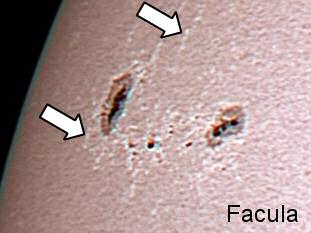facula

A facula is a bright area on the face of the Sun, commonly seen near an active region, such as a sunspot, or where such a region is about to form. Faculae, which last on average about 15 days, are best seen in blue light and are not visible at all in H-alpha. They were named by Johannes Hevelius and are thought to be caused by luminous hydrogen clouds close to the photosphere.
The term is also applied to a bright spot on the surface of a planet or moon.


